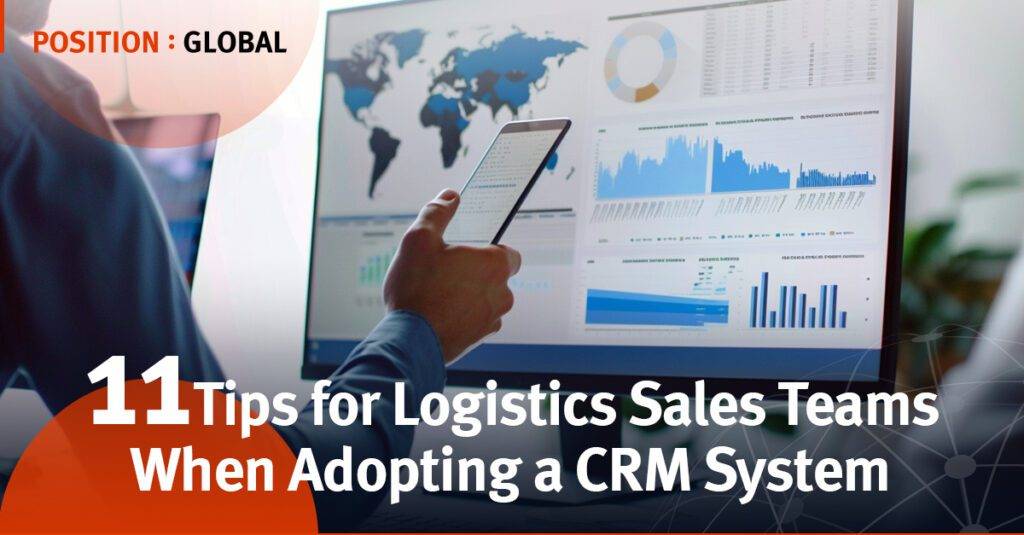
11 Tips for Logistics Sales Teams When Adopting a CRM System
After working with several clients who have adopted a Customer Relationship Manager (CRM) system for the first time, we’ve encountered a number of items that companies need to consider with regard to the overall onboarding and sales process. Consider these good growing pains as you transition into a larger, more sophisticated sales organization.
The good news is that they don’t all have to be done beforehand or even all at once. It helps to have a partner who understands your industry, company, and the relationship between marketing and sales and is not just a technical resource, so that the CRM works the way your team works. This is how your company is likely to get the most value.
P : G recommends working out several of these process flows on paper first and reviewing with your team. This can save you time and money upfront.
Standardizing Terminology
Effective communication is the backbone of successful operations. That’s why we emphasize the importance of standardizing terminology within your organization. Think of it as aligning everyone to speak the same language. Establishing clear definitions for terms like leads, contacts, and opportunities ensures that every team member is on the same page when utilizing the CRM. This not only streamlines processes but also enhances collaboration and data accuracy across the board.
In a casual environment, it’s easy to use some terms interchangeably as everyone knows what you’re talking about, but this will create confusion when you’re formalizing a process. For example, how do you define an inactive customer? Time since last shipment? Volume level?
Mapping Out the Sales Journey
Just as every shipment follows a carefully planned route, so too should your sales journey be meticulously mapped out. By understanding each stage of your unique sales process—from lead generation to conversion—you can tailor your CRM to support and enhance these steps. Visualizing and documenting this journey not only clarifies your workflow but also highlights areas for improvement and optimization. It’s like having a GPS for your sales team, guiding them towards greater efficiency and success.
Define each stage so that everyone is in agreement about the opportunities in their pipeline and what’s necessary to move them to the next stage.
Defining Roles and Responsibilities
Teamwork is essential for smooth operations. That’s why it’s crucial to clearly define roles and responsibilities when adopting a CRM. Whether sales representatives input data or managers oversee pipeline management, everyone needs to know their part in the process. This clarity not only fosters accountability but also prevents duplication of effort and ensures that each team member contributes to CRM success.
This can include a handoff from a BDR, consulting with an internal specialist, and the appropriate time for sales to hand off to a service team.
Defining Your Ideal Customer
This is really important for both your CRM and entire sales process.
Just as logistics companies tailor their services to meet specific customer needs, it should also define their ideal customer when implementing a CRM. This includes knowing the type of companies (industry, cargo, size, etc.) that you can best serve profitably, as well as creating buyer personas for the types of contacts at those companies.
Creating detailed buyer personas helps you understand who your target audience is, what challenges they face, and how your product or service can address their needs. This information not only guides your CRM customization but also informs your marketing efforts, allowing for more targeted and effective communication with your audience.
This helps you target the right audience, emphasize the right events to attend or sponsor, and can influence your messaging and content.
Data Clean-Up and Migration
Data is the lifeblood of logistics operations, and the same holds true for CRM adoption. Before migrating data to your new CRM, it’s essential to ensure that it’s clean, accurate, and up to date. This may involve deduplicating records, standardizing formatting, and verifying data integrity. Think of it as conducting a thorough inventory check before moving to a new warehouse—ensuring that everything is in its rightful place and ready for action.
If your data is really old or questionable (e.g., did you buy a cheap list from an unsolicited email, does your sales team pay attention to what they are entering, etc.), you may want to consider starting with just active customers or new prospects. It’s easier to add in some older data than to sift through years of bad data. You can also use an online data service to clean up your list.
High bounce rates and low deliverability scores will impact your ability to send marketing email. Don’t chance it on risky data or with contacts who are likely to not want to hear from your company.
Training and Onboarding
Just as a company will provide comprehensive training to its team, so too should businesses invest in training and onboarding when adopting a CRM. From basic navigation to advanced features, every user should feel confident and proficient in using the CRM. This training not only boosts user adoption but also empowers employees to leverage the full potential of the CRM in their day-to-day tasks. It’s like giving them the keys to a powerful new tool that enhances their productivity and effectiveness.
P: G recommends training on the basics and meeting again (or several times) to discuss how to use the CRM’s more advanced features. This will give the team a feeling of empowerment and encourage them to view the CRM as a net positive and not just another thing to do.
Integration with Existing Systems
Logistics operations rely on seamless integration between various systems and tools, and the same holds true for CRM adoption. Whether it’s email marketing platforms, accounting software, or customer support systems, your CRM needs to seamlessly integrate with existing systems to ensure smooth data flow and interoperability. This integration not only enhances efficiency but also provides a holistic view of your operations, enabling better decision-making and strategic planning.
You may find it difficult or expensive to have your CRM exchange data with your TMS on a regular basis. Be prepared to enter some data as you go along or do an occasional import/export of a CSV. This is important to discuss as you look at a CRM, its plug-ins and third-party integrations.
Customization and Configuration
Just as we customize our logistics solutions to meet specific client needs, so too should businesses tailor their CRM to fit their unique processes and requirements. Whether it’s creating custom fields, workflows, or automations, customization is key to maximizing the value of your CRM investment. Think of it as fine-tuning a logistics strategy to optimize performance and efficiency—ensuring that every aspect of your CRM aligns with your business objectives and workflows.
This can be updated as you go along–when your sales team becomes more comfortable with the CRM and they want to do more or as you fine-tune your system. It’s normal to have this happen and for some teams, a slow and steady adoption may be the preferred way to start.
Establishing Data Governance Policies
In the logistics industry, data security and compliance are top priorities. The same holds true for CRM adoption. That’s why it’s essential to establish data governance policies to govern the collection, storage, and use of data within the CRM. This includes defining roles and permissions, implementing security measures, and ensuring compliance with data protection regulations. By prioritizing data governance, businesses can safeguard sensitive information and build trust with their customers.
Just as you map out your sales journey, map out who on your team needs what type of access and only give them what they need to do their jobs.
Measuring Success Metrics
Just as companies track key performance indicators (KPIs) to gauge the success of our logistics operations, so too should businesses measure the impact of their CRM adoption. Whether it’s conversion rates, pipeline velocity, or customer satisfaction scores, tracking KPIs provides valuable insights into the effectiveness of your CRM strategy. This data not only highlights areas for improvement but also helps justify your CRM investment and demonstrate ROI to stakeholders.
The language of senior management is ROI. If you can show them that their investment is paying off in a number of ways, you’ve become a more influential sales leader and your path to yes with subsequent budget requests should become easier.
Continuous Improvement
Continuous improvement is essential for staying ahead of the curve. The same holds true for CRM adoption. By regularly reviewing and optimizing your CRM strategy and processes, you can ensure that it continues to meet the evolving needs of your business. Whether it’s gathering user feedback, staying informed about new features, or refining your workflows, continuous improvement drives innovation and growth—ensuring that your CRM remains a valuable asset for years to come.







